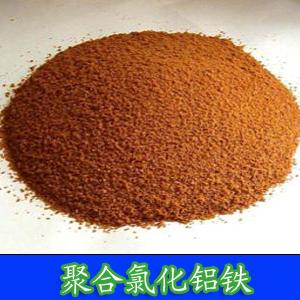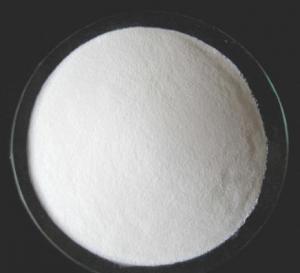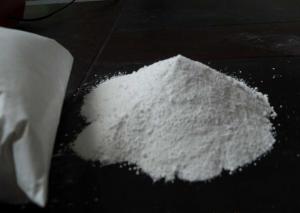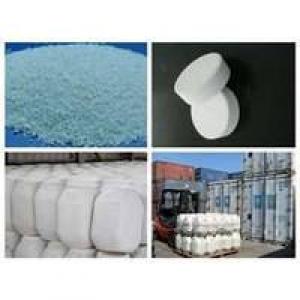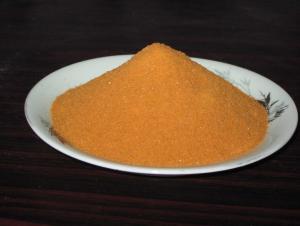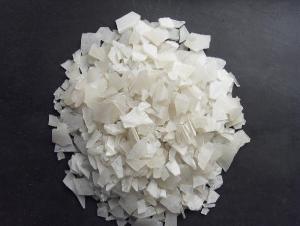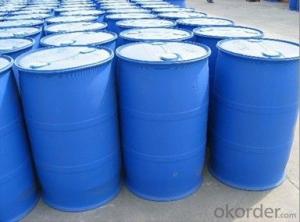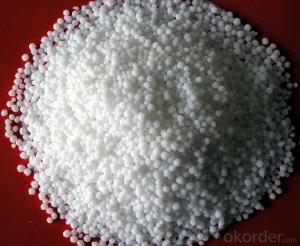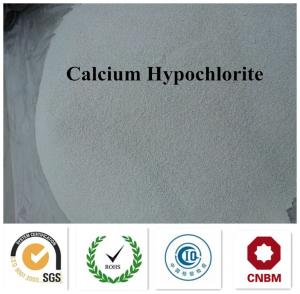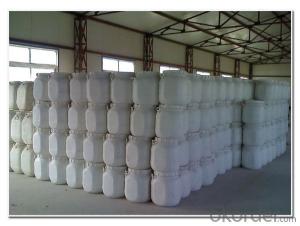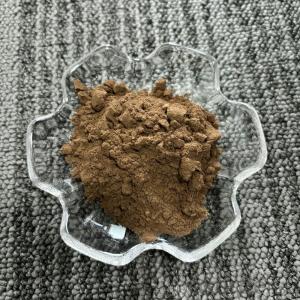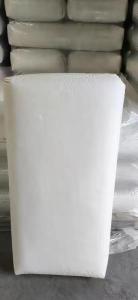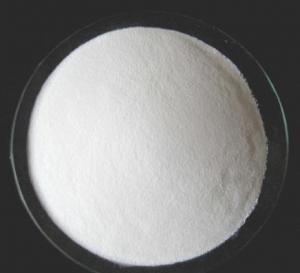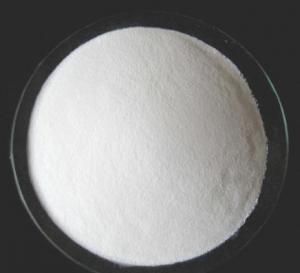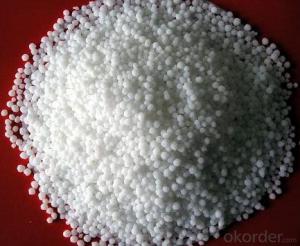Water treatment material Polyaluminium ferric chloride
- Loading Port:
- Tianjin
- Payment Terms:
- TT OR LC
- Min Order Qty:
- -
- Supply Capability:
- 6000 m.t./month
OKorder Service Pledge
OKorder Financial Service
You Might Also Like
Water treatment material Polyaluminium ferric chloride(PAFC)
Brief introduction:
Polyaluminium ferric chloride (PAFC) is made up of aluminum salt and iron salt coagulation hydrolyzing and become
a kind of inorganic polymer coagulants, based on the principle of synergies, join the elemental iron ion or three iron
oxide and other compounds containing iron composite is a new type of high efficient coagulant.
It combines merits for aluminum salt and iron salts of aluminum ion and iron ion form has improved significantly,
polymerization degree is greatly improved. Aluminum, iron coagulant respectively of the advantages of air flotation
operation, improve the concrete performance of polyaluminium chloride; For high and low temperature and low
turbidity water water purification treatment effect is particularly evident, needn’t add alkaline additives and other
coagulant aid.
performance:
1, fast hydrolysis and weak hydration. Dense alumem ustoum, sedimentation speed.Affected by the temperature
change is small, can meet the requirements of shear force in the process of flow.
2, solid product is brown, reddish brown powder, easily soluble in water.
3, which can effectively remove the aluminum ion in the raw water and remaining free aluminum ion in water after
aluminum salts coagulation.
4, wide applicable scope, drinking water, industrial water, water, sewage and industrial wastewater treatment, etc.
5, Less dose, treatment effect is good, cut down the cost of 10-20% than other coagulants.
6, using method and packaging purposes matters is essentially same as polyaluminium chloride.
features:
1, the dosage is far lower than the traditional flocculant,the water quality is good after purification.
2, the flocculation body is formed fast, precipitation is rapid, is bigger than traditional products processing capacity.
3, the alkalinity of the water consumption, less water lower PH.
technology classification:
1, drum-type poly aluminum chloride, general aluminum content, high water insolubles, used for sewage treatment.
2, frame type poly aluminum chloride has high aluminum content, low water insolubles, used in sewage treatment
and drinking.
3, spray drying, poly aluminum chloride has high aluminum content, low water insolubles , faster dissolve. used
for potable water and higher standards water treatment.
name of index | index | |
PAFC | ||
liquid | solid | |
relative density(20°C) ≥ | 1.19 |
|
PH value(1%aqueous solution) | 3.5-4.5 | 3.5-4.5 |
(AL2O3i)content% | 10.0 | 29 |
(Fe2O3)content% | 1-2 | 2-3 |
basicity,% | 60-95 | 60-95 |
water insoluble,% < | 0.3 | 1.0 |
(As)content,% ≤ | 0.0003 | 0.0006 |
(Mn)content,% ≤ | 0.045 | 0.01 |
(SO2-)content % | 3.5-9.6 | 3.5-10 |
purposes:
Polyaluminium ferric chloride has widely scope of application: used in drinking water, industrial water, sewage
and industrial wastewater treatment, polyaluminium ferric chloride has obvious effect with all kinds of industrial
water and drinking water purification treatment.
- Q:Salt is not a kind of inorganic salt
- Salt chemical name is called "sodium chloride", chemical symbol: NaCl
- Q:An inorganic salt is dissolved in water and yields a solution that has a color. Make a statement about the type of element the substance contains that casuses the color.Thanks!
- Many inorganic salts form colored solutions . pper ( II) sulfate ( Blue ) nickel (II) acetate = green, mangaanse ( II) chloride = pink, iron(III) chloride = yellow, potassium dichromate, orange and so many more Can you be more specific ?
- Q:Do inorganic mercury salts bioaccumulate?
- Yes they do bioaccumulate. Mercury builds up for years and years, and eventually sits in a residue of pure mercury. - JJ
- Q:How does inorganic salts maintain osmotic pressure and pH
- Osmotic pressure to the concentration of inorganic salts affect the distribution of water molecules inside and outside the cell ~ to adjust the osmotic pressure, when the extracellular fluid concentration is greater than the intracellular fluid when the performance of water loss, otherwise the water.
- Q:For science I have to find out what salts are used for but when i search a salt like lithium sulphate it always comes up with &quot;would you like to buy&quot; could you please tell me what these salts are used for*lithium sulphate*zinc nitrate*sodium phosphate
- HI I'M PNT. LITHIUM SULFATE is a white inorganic salt with the formula Li2SO4. It is used to treat bipolar disorder. It is soluble in water, though it does not follow the usual trend of solubility versus temperature — its solubility in water decreases with increasing temperature . This property is shared with few inorganic compounds, such as the lanthanoid sulfates. Lithium sulfate crystals, being piezoelectric, are also used in ultrasound-type non-destructive testing because they are very efficient sound generators. However they do suffer in this application because of their water solubility. ZINC NITRATE: Zinc nitrate (Zn(NO3)2) is a chemical compound used as a mordant in dyeing. It is also a source of zinc ions for chemistry. An example reaction gives a precipitate of zinc carbonate:Zn(NO3)2 + Na2CO3 → ZnCO3 + 2 NaNO3. Conditions/substances to avoid are: reducing agents, organic materials, metal powders, heat and flame, cyanides, sodium hypophosphite, tin(IV) chloride, phosphorus, thiocyanates, carbon, and sulfur. Its Relative Molecular Mass is 189. SODIUM PHOSPHATE: Sodium phosphate are forms of phosphorus, which is a naturally occurring substance that is important in every cell in the body. Sodium phosphate is used to treat constipation and to clean the bowel before surgery, x-rays, endoscopy, or other intestinal procedures. Sodium phosphate enemas are also used for general care after surgery and to help relieve impacted bowels. Sodium phosphate may also be used for other purposes not listed in this medication guide REGARDS, PNT.
- Q:Consult the science and engineering, chemical and biological experts, plants absorb inorganic salts and water, then the absorption of inorganic salts in what form is absorbed into the way, is absorbed in the way of ions or in the way of the compound, And then only in the body only ionized into the ion state exists in the body. Grateful
- Of course it is ion
- Q:Does the plant roots absorb inorganic salt ions must be active
- Plants absorb inorganic salts and do not necessarily absorb water. Plants absorb moisture and absorb inorganic salts are two relatively independent processes. Plants absorb moisture through the infiltration of root cells to absorb water, the process is essentially free of water diffusion process, neither the carrier nor the need for energy; and plant absorption of inorganic salts is carried out by means of active transport, This process requires the carrier and consumes the energy generated by cell metabolism. Of course, plant water absorption and absorption of inorganic salts are a certain association, inorganic salts to be dissolved in water to be absorbed, and inorganic salt ions in the transport of plants can not be separated from water.
- Q:Sodium bicarbonate is not an inorganic salt
- Yes, organic refers to salts with carbon skeleton chains other than carbon and carbon oxides and carbonates, so sodium bicarbonate is an inorganic salt
- Q:Why is the residue after burning known as coarse ash? And inorganic salt content What is the difference
- There is no essential difference, the measurement method is different, so the result is different, the former is the burning method, which is the chemical method or instrument method
- Q:I had asked a similar question on GC operation last week, but for different kinds of compounds.For my biochem research project at school, I&#39;m testing the ability of a species of bacteria to biodegrade alcohols found in gasoline (methanol, ethanol, isopropyl, tert-butyl and cyclohexanol). The bacteria is growing in a solution of minute amounts of alcohols and Mineral Medium, which is basically just water and dissolved inorganic salts (CaCl2, KH2PO4, NH4NO3 and MgSO4).I know GC&#39;s are primarily used to separate organic mixtures. Can a GC separate organic compounds dissolved in salt water? Is it safe to put salt water in a GC? Or would I have to do an extraction to separate the alcohols and run the organic extract through the GC?
- Do not let salts enter the GC. You will have to perform an extraction step and run that. Salts can precipitate in the column or degrade into reactive species that can corrode the GC. Water is OK since it will not destroy the column (I've run aqueous solutions before), but salts are not.
1. Manufacturer Overview |
|
|---|---|
| Location | |
| Year Established | |
| Annual Output Value | |
| Main Markets | |
| Company Certifications | |
2. Manufacturer Certificates |
|
|---|---|
| a) Certification Name | |
| Range | |
| Reference | |
| Validity Period | |
3. Manufacturer Capability |
|
|---|---|
| a)Trade Capacity | |
| Nearest Port | |
| Export Percentage | |
| No.of Employees in Trade Department | |
| Language Spoken: | |
| b)Factory Information | |
| Factory Size: | |
| No. of Production Lines | |
| Contract Manufacturing | |
| Product Price Range | |
Send your message to us
Water treatment material Polyaluminium ferric chloride
- Loading Port:
- Tianjin
- Payment Terms:
- TT OR LC
- Min Order Qty:
- -
- Supply Capability:
- 6000 m.t./month
OKorder Service Pledge
OKorder Financial Service
Similar products
New products
Hot products
